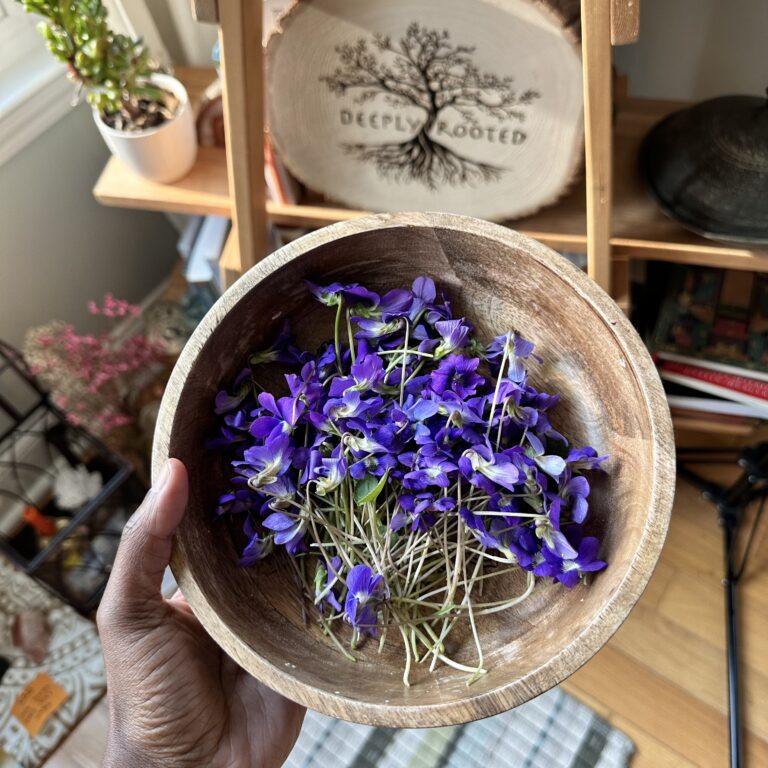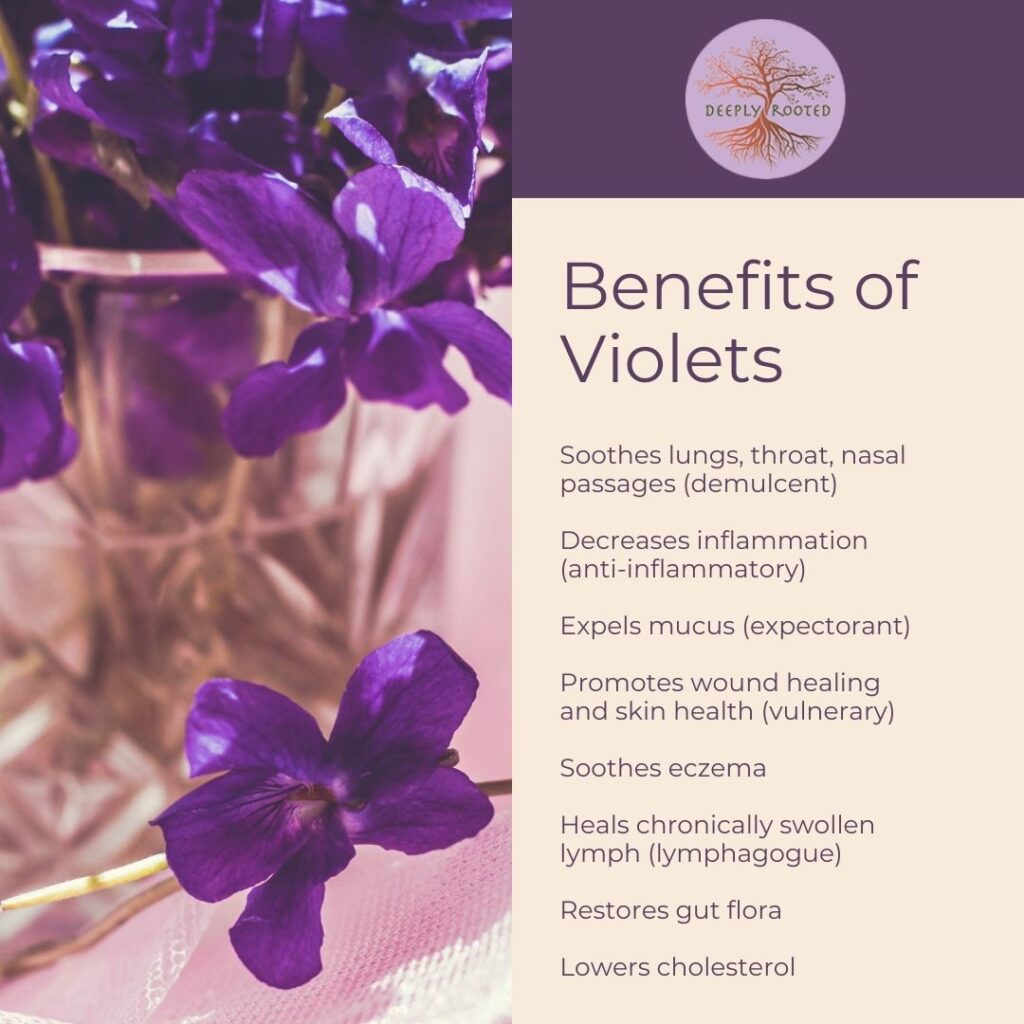Violets: Herbal Medicine in Your Backyard
If you’ve noticed these purple-ish blue beauties growing in your yard or local parks, it’s time to make friends! Violets are a plenteous, nutritious herb that grow well throughout much of North America and Europe.
All varieties of violets are edible (though the yellow violets are contested). Flavors vary from earthy to sweet. Some European varieties even have a wonderful aroma that I’m quite jealous of, since American violets are rarely fragrant.
Violets also vary in color, from blues and purples to creams with lavender adornments. There are even rare yellow varieties.
The benefits of violets span from respiratory health to skin, lymphatic and digestive health. These little beauties are powerful!
Violets can be prepared in a variety of ways based on the benefit you’d like to receive.
-
A salve or poultice of flowers, leaves and stems is best for healing wounds and soothing skin.
-
A tea or tincture of flowers, leaves and stems works well for internal healing, such a restoring gut flora and soothing mucus membranes in the respiratory system.
-
Eating fresh flowers on and in foods also delivers healing properties within the body. Young, tender leaves are most palatable as older leaves become fibrous. Some perceive a soapy taste with leaves with others taste a mild, herbal flavor. Leaves can be sautéed, simmered, or eaten raw.
-
Freeze them in ice cubes for a decorative and nutritive summer beverage.
Forage in spaces that do not receive toxic runoff from roads and buildings. Always confirm your plant identifications with at least 3 sources / methods until you’re an expert. Then enjoy your harvest!



